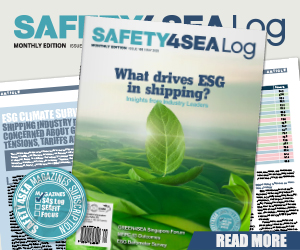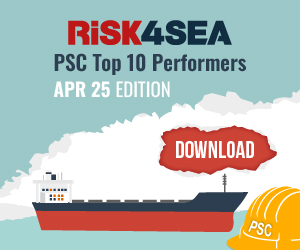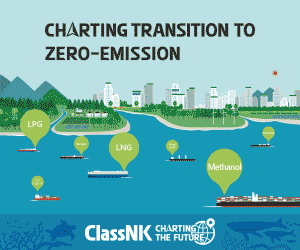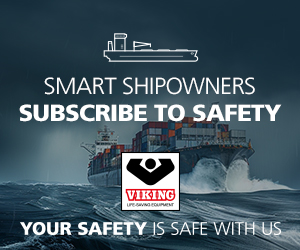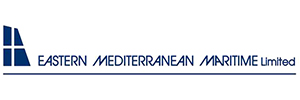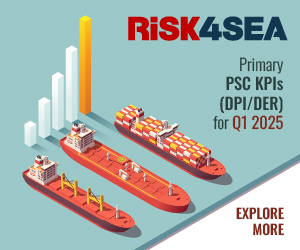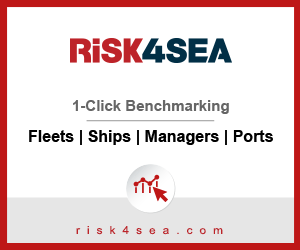Lloyd’s Register (LR) has issued a publication to support the shipping industry in understanding and managing its impact on the marine environment.
The Shipping Biodiversity Report offers guidance and potential actions for shipowners, operators, regulators and policymakers seeking to protect marine biodiversity and environment while maintaining efficient operations. Furthermore, the report connects environmental impact with financial and reputational exposure.
Global variation in risk to marine ecosystems
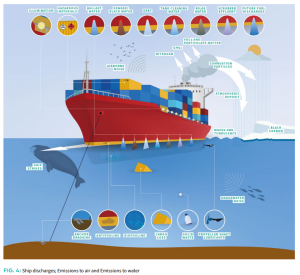
According to the report, identifying the vulnerabilities and the corresponding pressures allow preventive and corrective actions to be taken towards preserving and restoring the ecosystem using widely accepted methods such as ecosystem-based approaches. As the maritime sector develops methods to reduce GHG emissions, new fuels and technologies are likely to be adopted. While these innovations could complement with marine environment, a lack of clear understanding of the scale and impacts of the pressures could hinder the expected outcome, lead to unintended consequences or fail to take advantage of opportunities to achieve multiple benefits.
Distinguishing between activity and pressure
The distinction between activity and pressure is important, LR finds. Human activities are a part of and shape the ecosystem function. Identifying the acceptable limits and respecting the coexistence foster long term resilience of both the society and the ecosystem. Not all shipping activities that cause environmental pressure(s) necessarily result in ecosystem degradation, particularly when compared to the alternative transport modes. Many of the shipping activities which are regulated with national/international requirements consist of individual ship discharge limits. However, some activities (e.g emissions to water) remain under regulated, relying on voluntary compliance. Moreover, the applicable discharge limits, compliance checking and enforcement is rigorous within territorial waters, while in areas beyond national jurisdiction (the high seas) often remain insufficiently addressed.
Implications of ineffective management
Failing to effectively manage the shipping pressure on marine ecosystems, including the high seas, could lead to segregated approaches, such as regional requirements, exposure to indirect compliance with other national/international treaties, and induce disproportional negative impacts to stakeholders. This, in turn, risks undermining efforts toward a just and equitable transition for the maritime sector. Addressing shipping pressure is not only vital for the health of our oceans, which is already under stress from other human impacts, such as climate change, but also for the long-term sustainability of the shipping industry, the publication highlights. Alignment with the Global Biodiversity Framework will lead to a more coordinated global effort in reducing the impact of human activities on the marine environment and de-risking of biodiversity loss and pollution in the shipping industry.
Role of early adopters and incentives
As explained, ‘first movers’ approach of interim/voluntary commitments by stakeholders is important for accelerating the uptake of technology and best practices. It may be important for corporations to consider ‘Biodiversity’ into climate-nature transition planning. These efforts should be complimented with incentive regimes and recognition schemes to encourage participation.
Opportunities with the ageing world fleet
As the world fleet is ageing, an opportunity is presented to act with the next generation of vessels, technology and human capital. Seizing this opportunity to find synergy between de-carbonisation measures is an important lever to reduce shipping pressure while the sector de-carbonises, the report concludes.
Recommendations
#1 ‘Just culture’ for environmental compliance
Actions
- Develop an environmental management system and appoint senior officer as ship’s environmental officer
- Increase crew awareness on biodiversity and nature
- Regular crew training in waste handling, spill prevention, and eco-efficient practices
- Encourage crew involvement and feedback in environmental initiatives
Advantage
- Enhance crew’s sense of belonging and responsibility towards marine ecosystems
- Attract future recruitment and retain existing talents
- Establish auditable and verifiable process for ESG outlook
#2 Transparency and reporting
Actions
- Voluntary reporting of environmental data (e.g. CO₂ emissions, incidental discharges)
- Assess ship/fleet-level environmental footprint by quantifying discharges (lifecycle carbon analysis, URN signature)
- Participate in voluntary reporting systems, e.g. for whale observations
Advantage
- Promote accountability
- Able to set up reduction targets
- Meet reporting requirements/industry standards (i.e. CSRD, TNFD, BIMCO SHIP PI, etc.)
#3 Technology uptake
Actions
- Use and regularly maintain pollution prevention and green technologies
- Install onboard sensors and real-time monitoring systems to detect and prevent emissions to air/water
- Uptake of zero/near-zero fuels and alternative energy sources
Advantage
- Progress toward goal of zero/near-zero discharge ships (to both air and water)
- Compliance beyond minimum requirements / meeting stringent regional requirements
- Increase asset value
#4 Operational practices
Actions
- Route optimization, weather routing, and scheduling
- Action plan for navigating in MPAs, migration routes, and other sensitive marine habitats
- Plan lay-ups and anchoring considering local environmental conditions
- Use reception facilities
- Reduce waste generation
Advantage
- Eligibility for incentive programs
- Reduce delays and costs
- Reduce risk of non-compliance penalties
- Reduce pressure on ecosystems
#5 Digitalization
Actions
- Use digital record books and management plans (oil record book, BWM plan, etc.)
- Use digital aids for navigation (vessel performance, sensitive area mapping, whale watching)
- Increase ship-to-shore data connectivity
#6 Advantage
- Reduce human intervention
- Reduce clerical errors
- Enhance ‘compliance by design’ of ship
- Enable two-way data sharing (i.e. PSC of a ship, governing agencies, etc.)
- Assist with ‘just in time arrival’
#7 Collaboration
Actions
- Engage in partnerships with maritime value chain, such as ports, charters, asset finance
- Collaborate with academia and research institutions
- Participate in initiatives reducing pressure on environment
- Partner with emerging technologies and novel practices
- Promote sustainable practices through supplier engagement/procurement process
Advantage
- Future-proof the asset and increase resilience of the business model
- Share the cost/burden of climate/nature-positive actions
- Increase supply chain options for sustainable and environmentally friendly materials/products
The oceans that sustain our industry face mounting pressures from human activities. As our understanding of the ocean broadens, more international and regional regulatory regimes pose challenges to the industry where proactive engagement and collaboration will be needed
… said Sahan Abeysekara, LR’s Lead, Environment Policy and Strategy.










































